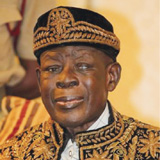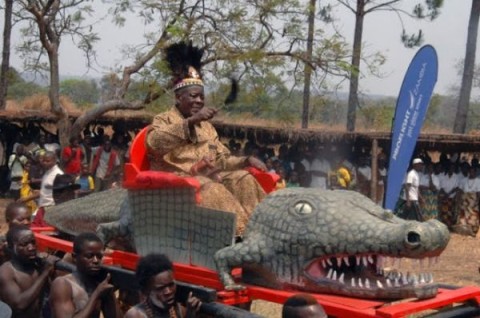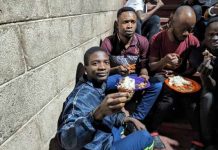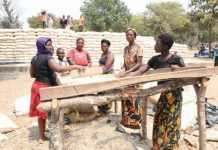
WHAT is in death? What is in time? In the case of Bemba paramount chief Chitimukulu, it may mean his subjects not witnessing his burial.
It also entails having the liberty to insult his body; pall-bearers enduring 180 kilometres walking with the body for three days and nights; the media prohibited from taking pictures of the body; unable to be buried until after a year and much more than that. It is all about keeping tradition, an elaborate funeral rite for that matter!
On the face of it, the whole ceremony seems to give a frivolous treatment of the Chitimukulu, otherwise known as Mwine Lubemba, a chief revered even beyond the boundaries of his empire. But do not mind, it’s all about tradition!
According to Bemba folklore, these are unavoidable procedures whose cultural and traditional significance spans centuries. It all begins with the sound of the imangu (royal drum whose sound signals the chief’s death).
Having died on April 3 last year, Chitimukulu Ackson Chilufya Mwamba was only buried last Sunday at Mwalule in Chinsali of what is now Muchinga Province where all paramount Bemba chiefs are buried, starting with the first one, Chiti Muluba. The one whose remains were laid to rest last weekend was the 38th, according to contemporary history, and he ascended to the throne in 2007, taking over from Chitimukulu Chilufya Mwango Mutale Chitapankwa.
The paramount chief is only buried a year after his death. In the case of Chilufya Mwamba, the days extended to 473!
But even with that, only a few people witness the actual burial. In fact, it is only the chimbala (guardians), who reside at Mwalule, who do so. The pallbearers (batunyelele), who have to endure three days of walking with the body, passing through various villages, only have to handover the remains to the guardians. They carry the body, which is wrapped in cow hide coffin (umuba), from the royal palace at Kalungu in Mungwi, where it is looked after by some chosen people.
The body, which the people make fun of, as batunyelele move from village to village, is not supposed to be photographed. Legend has it that some white man who years ago defied this practice, ended up getting mad.
The master of ceremonies at the burial procession at the royal palace on Wednesday last week repeatedly warned that whoever was going to take pictures of the body, in whatever form, would face ghastly consequences.
But that did not stop the villagers from insulting the body when the batunyelele set off on their three-day journey of taking the body to the graveside.
The ubiquitous batunyelele briskly plod through the thicket of Kasama and Chinsali to Mwalule, the final resting place of Chitimukulus. The average distance they cover is 60kms per day.
And do not think that those insulting the body were elderly people, they included young girls aged probably 12.
Defence Minister Geoffrey Mwamba, who represented President Sata at the burial procession, jokingly told the media that people should not be surprised or shocked that he sometimes fires such invectives because it is normal in Bemba tradition.
GBM, as the Kasama Central member of Parliament is popularly known, is son of the late chief Munkonge of Kasama.
Just in case you have heard GBM use a seemingly offensive term in jest, it is nothing compared to what some of the girls were uttering.
The master of ceremonies, the royal counsellor James Mulenga, repeatedly told the gathering at the royal palace not to insult while there but do it somewhere else.
That advice was indeed heeded, even though those who were new to the scenario wondered why someone would insult at the funeral.
But then, according to them, that is the only opportunity you have to insult the chief as you cannot do so while he is living.
Still, they took the insults to another level!
In fact, they researched for more insults than the usual everyday ones you hear at the bus stations. These are insults as defined by the lexicon. And when they are said in Bemba or vernacular, the impact is telling.
But at the royal palace, none came out.
The only thing that came out were tears, even though the master of ceremonies had warned that no one should weep at the royal palace as they had the opportunity to do so when he died.
But then, in the past, when the chief died, it would be known immediately by the subjects.
Perhaps it could be the reason why the subjects do not attend the actual burial other than the guardians. It is said to be a guardian is hereditary.
As the tunyelele carry the body to the guardians, they carry with them money to be given to them, which in a way is like seeking permission. It is said if the Chitimukulu did not preside well over the affairs of the chiefdom, then the guardians will not give him a befitting burial.
At this point, it is not known what kind of burial was given to the late Chitimukulu. But one thing is clear, he was liked by the people.
The master of ceremonies praised him for spearheading development, particularly in bringing electricity to the Malole area and the tarred road to the palace.
GBM also praised him.
“The late paramount chief worked in a very cordial relationship with the government and will be greatly remembered by all of us. He ruled the people of this province with impartiality and lobbied Government to bring development to this region. We shall greatly miss him and we also pray that his soul may rest in eternal peace,” he said at the start of the burial procession attended by among others Nevers Mumba, Elias Chipimo and several chiefs.
The Chitimukulu is no ordinary chief; he is well-regarded. He is a quintessence of the rich Bemba tradition that has remained intact through generations. In this preservation of the tradition, he is not alone; he has advisors on various matters. These, known as ba kabilo (chief’s advisors), are 72 and perform just as many roles.
One, identified as Nkole Mambwe, is dressed in a wrinkled brown jacket and a red beret with a white crucifix perched on his head. He prefers silence on the role he plays at the palace.
Another man sporting an unkempt beard and moustache cascading on his upper lips is draped in a mwala – a white cloth that ba mushika ba mfumu (chief’s ministers) wear. His little squint pierces through as he explains the burial procession in brief.
In the middle is centenarian Koni – a reservoir of the knowledge and Bemba tradition. Do not be misled by his teary eyes, unending grin and wobbly gait. Though he, too, is a kabilo, no-one is willing to explain his exact role but clearly, he has loads and loads of information on the Bemba tradition.
Acting Chitimukulu, Chilufya, is cagey about letting the kabilos grant an interview over the funeral of his father and Bemba tradition in general.
“It’s against the Bemba tradition to give interviews to reporters on a day like this and with only few advisors,” he says in a rather soft but authoritative tone.
“The interview can only be given when all the 72 ba kabilos are here [in the insaka]. They all have different specialties and no-one knows the other’s. Even I do not know what role they play at the palace. When time to play their role comes, they just tell me without explaining,” the acting Chitimukulu says, this time with a sense of finality.
He believes tradition and the media are incompatible because of what he says are distortions and exaggerations by the latter.
“When I tell you something, you will add your own,” he says and adds, “for instance, you announced the death of the Chitimukulu in the media last year. That is not allowed as it is against our tradition. You should have waited for certain traditions to be performed before announcing. In fact, it’s not your duty to announce the death of Mwine Lubemba.”
Reporter: That is precisely why you should explain the Bemba tradition regarding the death
of the Chitimukulu so that the public understands
and avoids breaking tradition when there is
a similar death in future.
Acting Chitimukulu: The Bemba tradition is for the Bashilubemba. It’s not for everyone to know.
If these few advisors explain anything to you, they will be in trouble. If you want any information, you should come when there
is Ncenje (Bemba supreme court). During that
time, all the 72 advisors will be present to
explain their roles.
If you find anyone explaining everything about
Mwine Lubemba’s kingdom, just know that they are telling you lies.
In any case, tradition was broken when you
[reporters] started by asking some questions. This is despite the fact the reporters performed certain rituals as required by the tradition.
Reporter: Thank you, but how can we get to Mwalule (burial place of the Chitimukulu)?
Acting Chitimukulu: Which route are you going to use and what do you want to do there? An advisor interjects: Don’t even think of going to Mwalule.
You cannot get there. You will find yourself
in Tanzania.
Glossary
Bashilubemba – Bemba Royal Council
Imangu – Royal drum
Ncenje – Supreme Court of the Bemba
Babenye – custodians of the chief’s body
Batunyelele – Pallbearers
Bakabilo –
advisors/messengers of the Chitimukulu
Bamushika – Chitimukulu’s ministers
Mwalule – Chitimukulu’s burial place in Chinsali.

 JOIN DRIVERN TAXI AS PARTNER DRIVER TODAY!
JOIN DRIVERN TAXI AS PARTNER DRIVER TODAY!











